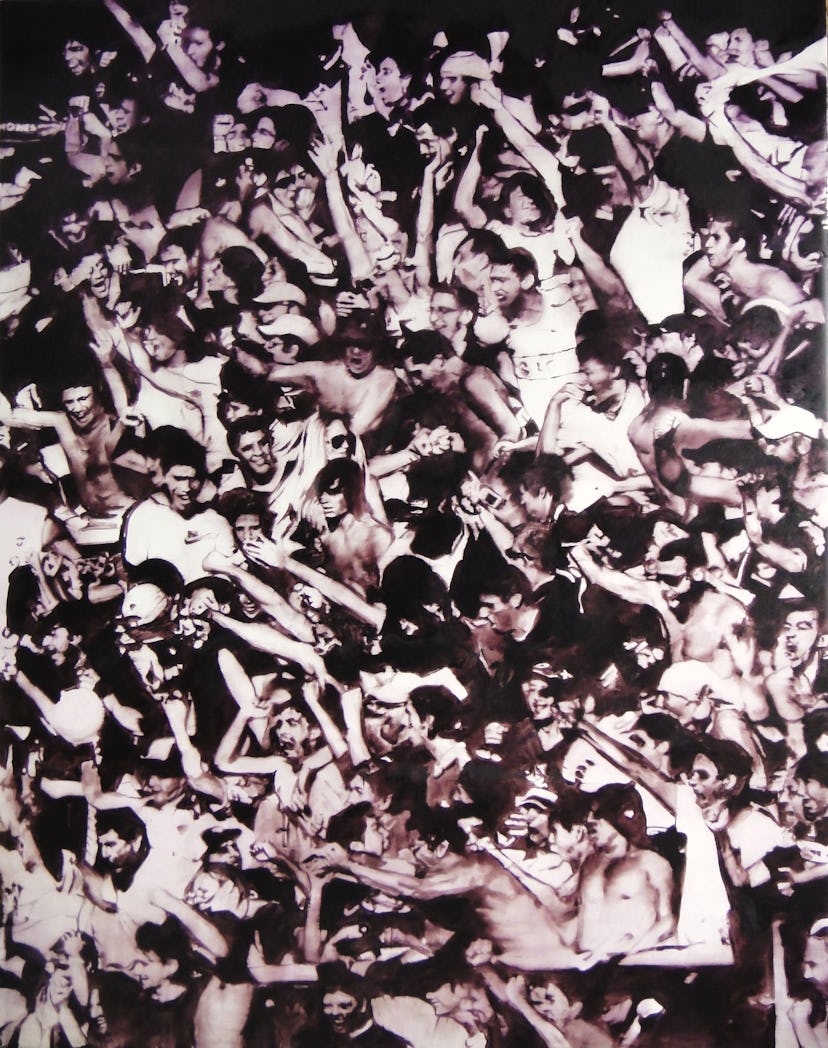Nights to Remember

Max’s Kansas City, the Cedar Tavern, Area, Mudd Club, Studio 54, Limelight, the Beatrice—New York’s dens of iniquity have long held an allure for the art crowd. And for “And those who were seen dancing were thought to be insane by those who could not hear the music,” a group show at New York’s Friedman Benda gallery, artists have taken nightlife as their muse. Here, a few of them recollect those bygone nights that have inspired their work. The show opens Tuesday, July 16th, with, of course, a raucous party.
1
“I was a promoter until I was 27 or 28. I met most of my friends at my mom’s restaurant in SoHo. We would host jazz nights and poetry readings there. We felt like the town was ours. Everyone’s apartments are so small, the clubs become the meeting point. I went to places with my friends, and they would come places I was promoting. We would go out and that’s when I would see everyone. I used to be terrified of the day. I would sleep from 11 a.m. to 4 p.m., then work, and then go out at 2 a.m. Afterwards, I would collect trash off the street for my art and come home and work some more. I love and hate New York. First we were New Yorkers; then we were artists.” —AGATHE SNOW
2
“In Rave, Rainald Goetz wrote: ‘Where you come from? Where will we go now? Why don’t I know who you are?’”¬ —FLORIAN SUSSMAYR
3
“Max’s Kansas City was my days of heaven. Shortly after arriving in New York City in the autumn of 1970, my cat died of starvation. It was either him or me in those days. At the funeral, my friend the artist Gordon Matta-Clark said, “Let’s go to Max’s, they have free chicken wings. Just get past Mickey at the door and buy a beer.” I met lifelong friends at Max’s, like Malcolm Morley, painter of parrots, and Peter Hutchinson, earth artist. During those Nixon nights, sex was ambiguous. I met a woman while she was kneeling next to a urinal sipping a Manhattan. It didn’t matter who was doing what in so-called restrooms. (Still true today, but Max’s set a precedent.) Mickey traded meals for art. He had a great collection—a scarlet Dan Flavin lit up the back room. Later, Gordon opened a restaurant called Food, where, for the first few months, soup was free. Then there was the Mudd Club and the Ocean Club, where Julian Schnabel was the dishwasher, and Hellfire Club, a true hole of iniquity. It didn’t serve food, just screwdrivers—but you brought your own Stoli.” —BILL BECKLEY
4
“I’m not really one for wild nights, but my favorite bar in the whole world is the Hemingway Bar at the Ritz Hotel in Paris. Every time I’m there, I make a special trip in order to order a martini while I read Fitzgerald or A Moveable Feast.” —ROSSON CROW
5
“When I was 15, I went to a club for the first time. It was a gay dance club—kind of hidden, without a sign—in an 18th century house in the middle of Savannah, Georgia. A tall, voluptuous woman with dark copper skin and golden hair offered to come home with me for $20. My mother took me there.” —ENA SWANSEA
6
“In 1986, when I was 17, the DJ of our small-town local dance club took me and the girl we were both in love with to a nightclub called Carrera in the outskirts of Ghent, Belgium. To date, this is still the most important event of my life—even if neither of us ever got the girl. Carrera opened up a whole world for me. It was gay and dark and I must have been the youngest one. Everyone was fashionable and eccentric. And then—the music. From the moment the song began, I went into a trance. It was “Can You Feel It,” by Mr. Fingers, aka Larry Heard. It changed my life; from then on, I started going to clubs two or three times a week chasing that sensation. In the ‘80s, Belgium had a great club culture. To this day, I feel that being part of the electronic and house music scene of the ‘80s has been the most intense chapter of my life. It became sort of a new family. It felt like the beginning of an adult life you had been longing for. It was going to be beautiful, mysterious, and dark.” —NICOLAS PROVOST